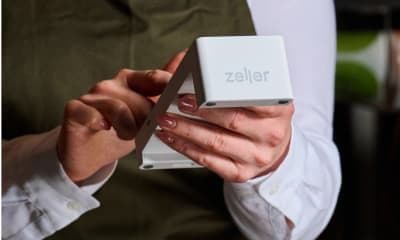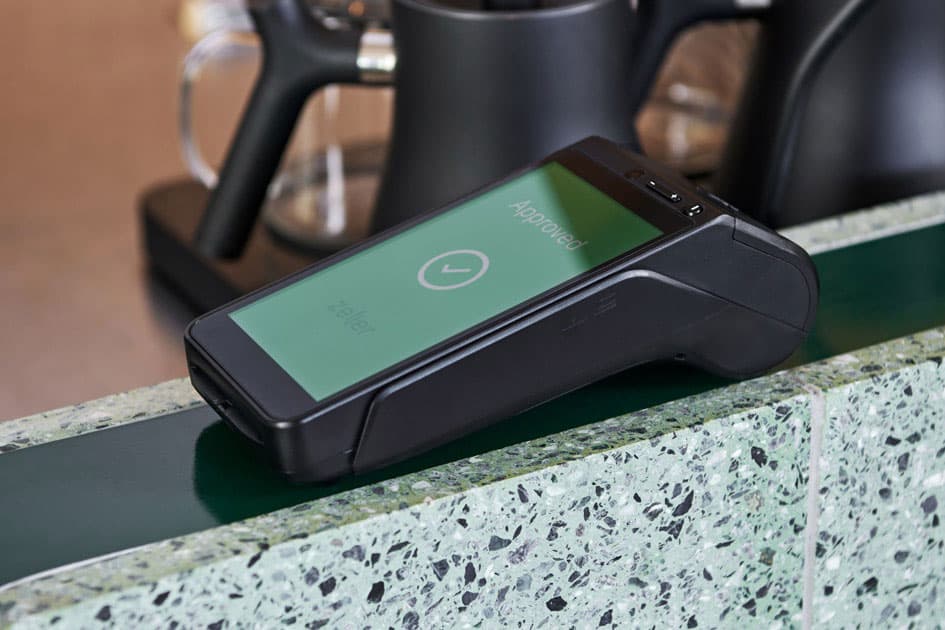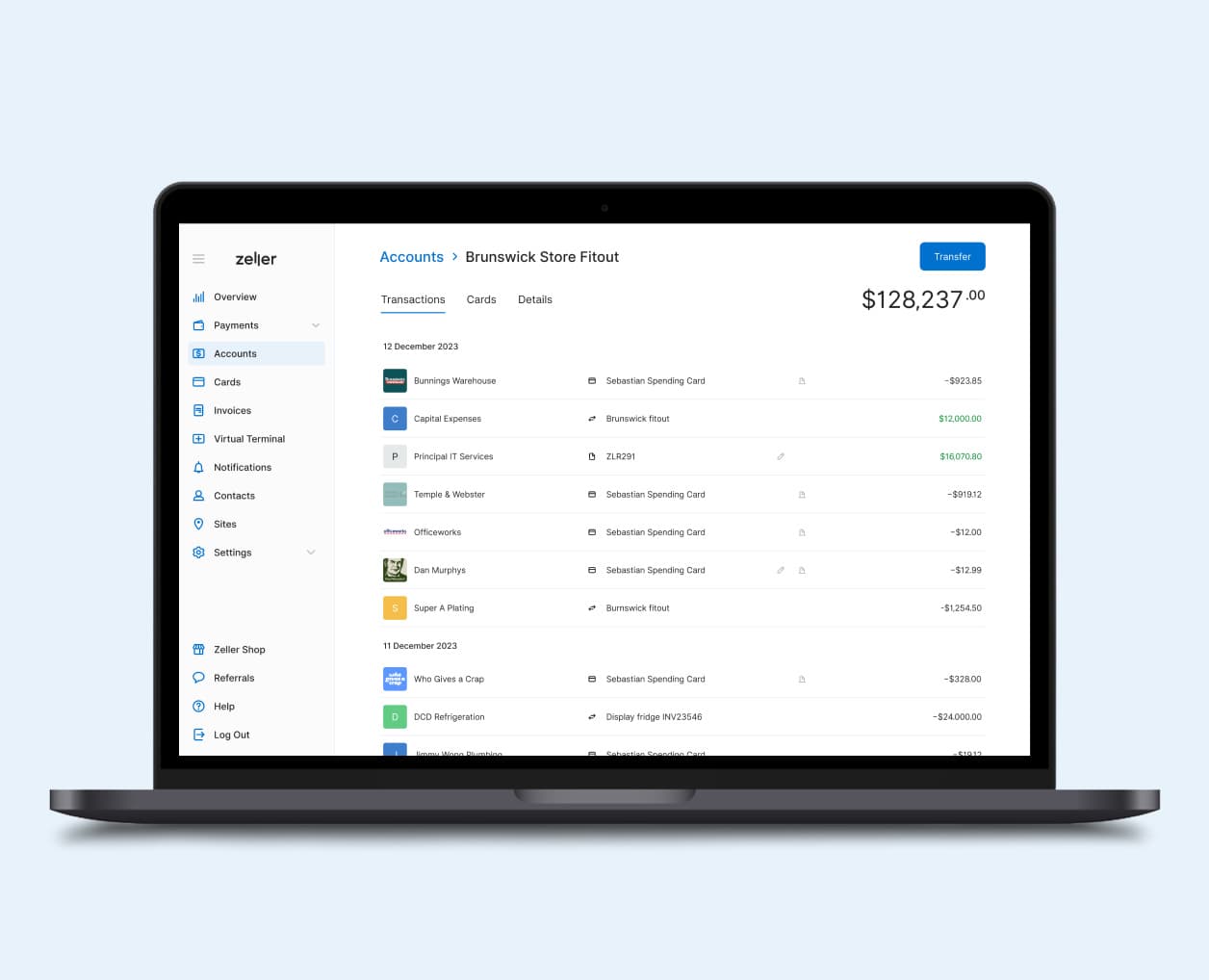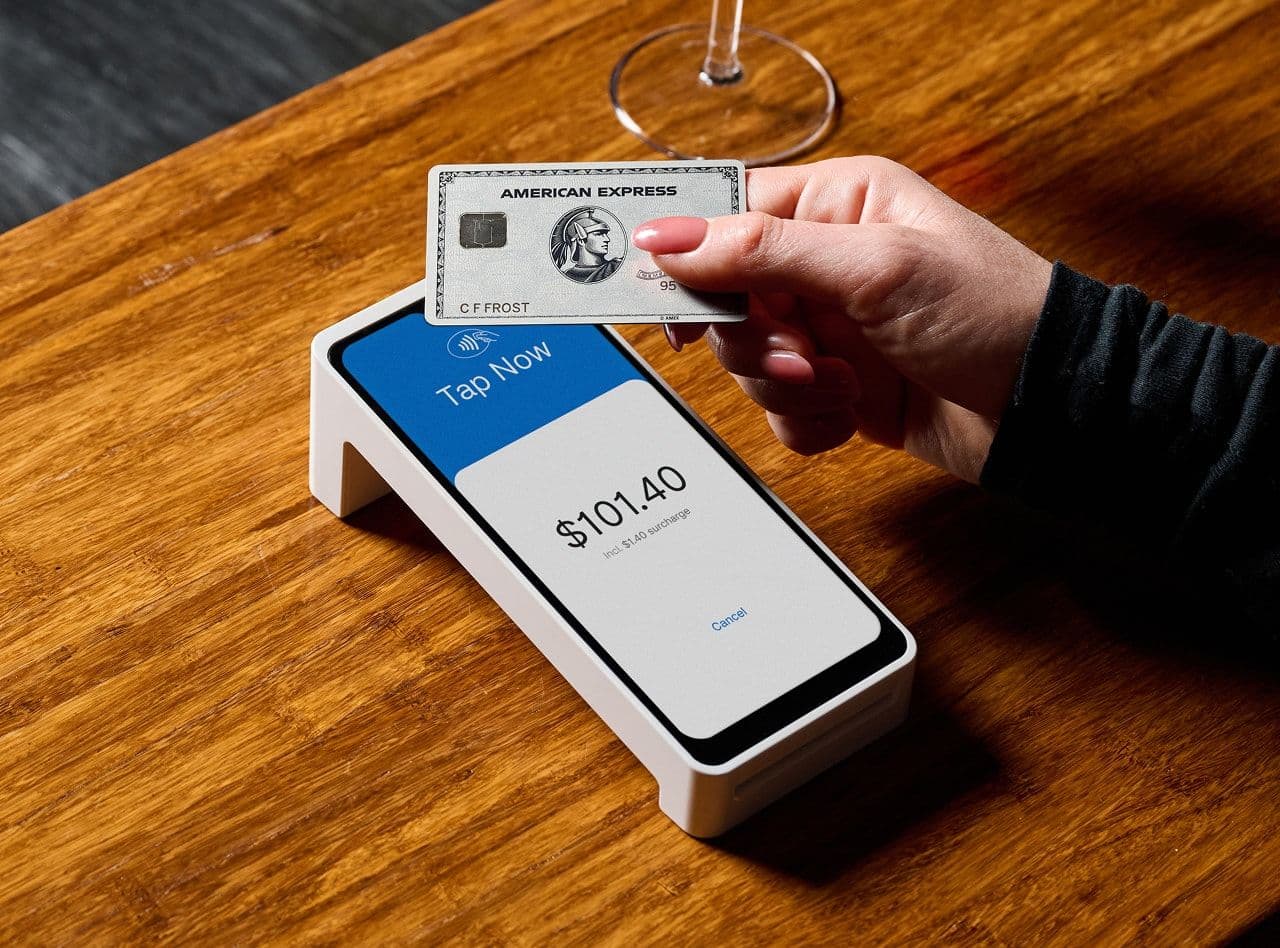
- EFTPOS & Point of Sale Solutions
Transaction Processing and Settlement: Why Do Banks Take so Long?
The faster funds settle, the quicker you can use them.
Waiting for a large settlement to clear is a frustrating experience that can have a roll-on effect for your business operations. Delays in settlement can disrupt wage payments, impact your ability to order business supplies, and even mean the difference between paying a bill on time or being penalised for late payments. Until your takings clear, you won’t be able to use the money that you’ve earned.
So why do bank transfers and settlements take so long? When you accept payment via Zeller Terminal, funds are swept to your Zeller Transaction Account nightly — ready for spending the next day. Keep reading to discover why large institutions take multiple business days to complete a transfer.
Next-gen payments technology has arrived
A cyclist in search of their morning caffeine fix could tap their phone to your coffee cart’s EFTPOS terminal, and immediately see the transaction in their online banking app; their accessible balance is now $4.50 less than it was a moment ago. So why can’t you, as a business owner, see those funds in your account immediately?
Banks don’t allow for automatic transfers to reduce the risk of fraud. It’s always been the case that a settlement must go through a number of checks and balances before the process is complete, which is why there has traditionally been a delay of a few business days between a customer paying for your product or service and that payment landing in your account.
Money transfers from one bank to another still take time to clear — yet new technology speeds up the pace of transactions, while safeguarding against fraud. Choose a provider who taps into next-gen payments, and your business and your customers remain protected, while you benefit from quicker access to your takings.
To understand why there are still transfer delays into bank accounts, let’s look at how the process works. (Need a quick reminder on what EFTPOS is and how it works? Read this quick explainer.)
How does settlement happen?
The payments process appears simple at a glance, with only a few steps between funds leaving the customer’s account and being settled into the merchant’s account. However, scratch beneath the surface and you’ll see there are a number of important checks that happen along the way.
The term “settlement” refers to the transfer of funds — accepted from customers, via your EFTPOS terminal, into your business transaction account. It’s the final step of the payment process and, arguably, the most important; it’s when your takings are available for spending.
Here’s how it happens, in simplest terms.
Your customers taps, dips or swipes their card or smart device to your EFTPOS terminal.
At a particular point of the day, of your bank or payment provider’s choosing, those funds are settled to your merchant account.
Funds become available in your account for spending, or settled to another account of your choosing.
Some payment providers will require you to complete a few manual steps to begin the settlement process at the end of every working day; however, with Zeller, this is done automatically.
Now let’s walk through the process in more detail. Whenever a customer chooses to pay for your goods or services with an electronic form of payment (i.e. anything but cash), their card must be in compliance with your business bank — which means the card must be able to be accepted through the bank’s processing network.
Once your bank (the acquiring settlement bank) accepts a payment, the transaction must be processed. The payment brand network contacts the customer’s bank to ensure that funds are available for spending. Assuming funds are available, the correct amount is deducted and sent through the processing network to the settlement bank — which settles the transaction.
Depending on your bank, funds may be available in your merchant account immediately. In some cases, settlement may take 24 to 72 hours. However, when it comes to accessing business funds, business owners need a quick and streamlined process that will give them access to their money with little wait time.
How long should it take?
First, let’s define what a business day is. According to the Australian Acts Interpretation Act (1901), business days are those considered to be “any day, other than a Saturday or Sunday, or public holiday”. Yet with each institution varying in timeframes for funds to clear into accounts, the general understanding is that it can take anywhere between one to ten business days for funds to be settled.
The online banking industry has a “three-day good funds model” policy in which transfers can take anywhere between two and four business days, as the banks want to make sure that the money is there before allowing the receiver to use it. Still, a considerable wait to gain access to your business’s takings.
Other factors to consider are different time zones and locations. If you’re transferring money internationally, there are also public holidays and differences in business hours to consider. This will likely impact the time taken for transfers. Adding to the complexity of this, international transfers are made via the SWIFT network. The network issues a payment order that passes electronically through a few banks until it lands in its destination — further adding to the delay.
Yet, given debit cards have made it possible to withdraw and spend money in just a few presses of a button (with real-time updates, to boot), why does it still take so long for funds to settle? It’s no wonder that merchants are starting to question why it takes days to receive their takings when money transfers can be done almost instantly.
How to get your takings faster
At present, if money needs to be settled into one account and then swept into another account (belonging to a different bank), it can take approximately three business days to reach its destination. This is because banks transfer money at certain times of the day and only during business hours.
To speed things up, you could keep all your business banking accounts under one financial institution — or, for even faster access to your business’s money, Zeller provides the perfect solution incorporating speed and flexibility. Using Zeller Terminal means transactions are settled into your Zeller Transaction Account that same night (and available to spend using your Zeller Mastercard, the very next day). As a business owner, you'll have access to your money and avoid any delays that could affect your business’s operations.
For more business resources, subscribe to the Zeller Business Blog.



